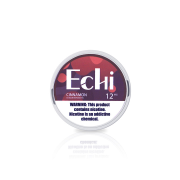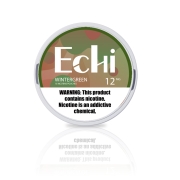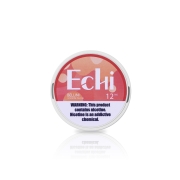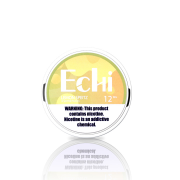Coffee Dip Bags: Market Trends, Production Insight, and Supplier Selection Guide
For centuries, coffee has captivated the world with its rich aroma and energizing flavor. While traditional brewing methods remain popular, a new trend is gaining momentum: coffee dip bags—single-serve, brew-in-the-bag sachets that offer both convenience and sophistication. As a manufacturer deeply rooted in the nicotine pouch industry, we bring a unique lens to this emerging market, shedding light on its production practices, brand differentiation, and the importance of choosing a reliable partner.
Industry Background and Trends
Driven by growing demand for on-the-go convenience and high-quality flavor experiences, the coffee market has evolved beyond cafés and instant coffee. Coffee dip bags—akin to tea bags in function—enable consumers to brew premium coffee with ease, anywhere and anytime. This trend aligns with broader shifts in consumer behavior: a preference for cleaner, more portable solutions and a heightened appreciation for craftsmanship in everyday products.
In recent years, key players in the specialty coffee space and even general retailers have embraced this format, leading to significant growth in both retail and B2B channels. Coffee dip bags now serve not just individuals, but also hotels, airlines, offices, and retail chains seeking a premium, low-waste coffee offering.
Production Process of Coffee Dip Bags
The making of a high-quality coffee dip bag is a meticulous, multi-stage process:
-
Bean Selection: It begins with sourcing high-grade Arabica or Robusta beans from renowned coffee regions such as Ethiopia, Colombia, or Vietnam.
-
Roasting: Beans are then roasted under precise conditions to achieve the desired flavor profile, whether bright and citrusy or deep and chocolatey.
-
Grinding: Once cooled, the beans are ground to an optimized size that balances fast extraction with full flavor development.
-
Pouch Assembly: The ground coffee is filled into dip-friendly mesh pouches that allow hot water to infuse through, without letting sediment escape.
-
Sealing and Packaging: Finally, the bags are nitrogen-flushed or vacuum-sealed to maintain freshness and extend shelf life.
At scale, this process requires advanced machinery and strict quality controls—closely mirroring the technical rigor found in nicotine pouch manufacturing. The precision and hygiene standards, in particular, align closely between these two sectors.
Differences in Brands, Origins, Equipment, or Technology
Not all coffee dip bags are created equal. The differentiating factors include:
-
Bean Origin: Regional characteristics impart distinct flavors. For example, Ethiopian beans deliver floral notes, while Colombian beans are known for balanced acidity and caramel sweetness.
-
Bean Type: Arabica beans are generally smoother and less bitter than Robusta, which is bolder and higher in caffeine.
-
Processing Technology: Advanced roasting and grinding machines, precise temperature control, and degassing systems impact the uniformity and flavor retention of the final product.
-
Pouch Materials and Packaging: Breathable yet durable filters, biodegradable films, and airtight packaging all contribute to a superior consumer experience.
This mirrors how equipment sophistication, formulation techniques, and raw material quality drive differentiation in the nicotine pouch sector—underscoring the value of investing in top-tier production partners.
Choosing a Reliable Supplier – Echi Nicotine Bag Manufacturer
Choosing the right supplier is critical in bringing a consistent, premium coffee dip bag to market. Echi, a respected name in the white-label nicotine bag industry, exemplifies what to look for:
-
Quality Assurance: From raw material sourcing to final packaging, Echi adheres to strict QC protocols at every stage.
-
Customization Capability: With flexible production lines, Echi can tailor blend strengths, flavor profiles, and packaging to fit specific market demands.
-
Manufacturing Expertise: Years of experience in precision formulation and high-volume pouch filling make Echi a transferable fit for businesses entering the coffee dip space.
-
Global Readiness: Familiarity with international regulatory standards, documentation, and logistics ensures smooth market entry across borders.
For buyers seeking a dependable, scalable manufacturing partner, Echi’s standards in nicotine production offer a benchmark of professionalism that can be seamlessly adapted to the coffee dip industry.
Final Suggestions
As interest in coffee dip bags grows, forward-looking brands should act strategically. Here’s what we recommend:
-
Vet the Supplier’s Background: Look for those with verifiable success in comparable precision manufacturing industries, such as nicotine pouches or wellness sachets.
-
Demand Flexibility: A reliable supplier should offer a wide range of customizations—blend strength, origin, pouch material, packaging design—to meet the needs of diverse markets.
-
Prioritize Quality Over Speed: While time-to-market is important, product consistency, consumer safety, and flavor integrity will ultimately define long-term success.
Conclusion
The coffee dip bag sector presents an exciting frontier for brands eager to capitalize on the merging of convenience and craft. With proper attention to sourcing, processing, and supplier selection, companies can launch products that resonate with modern consumers. Whether you’re exploring new product lines or scaling an existing one, choosing a partner like Echi, with expertise rooted in high-standard nicotine manufacturing, may offer the competitive edge you need.
For more information on white-label capabilities or production partnerships, visit
nicotine bag manufacturer | production and customization | product insights









Leave a Reply
Want to join the discussion?Feel free to contribute!